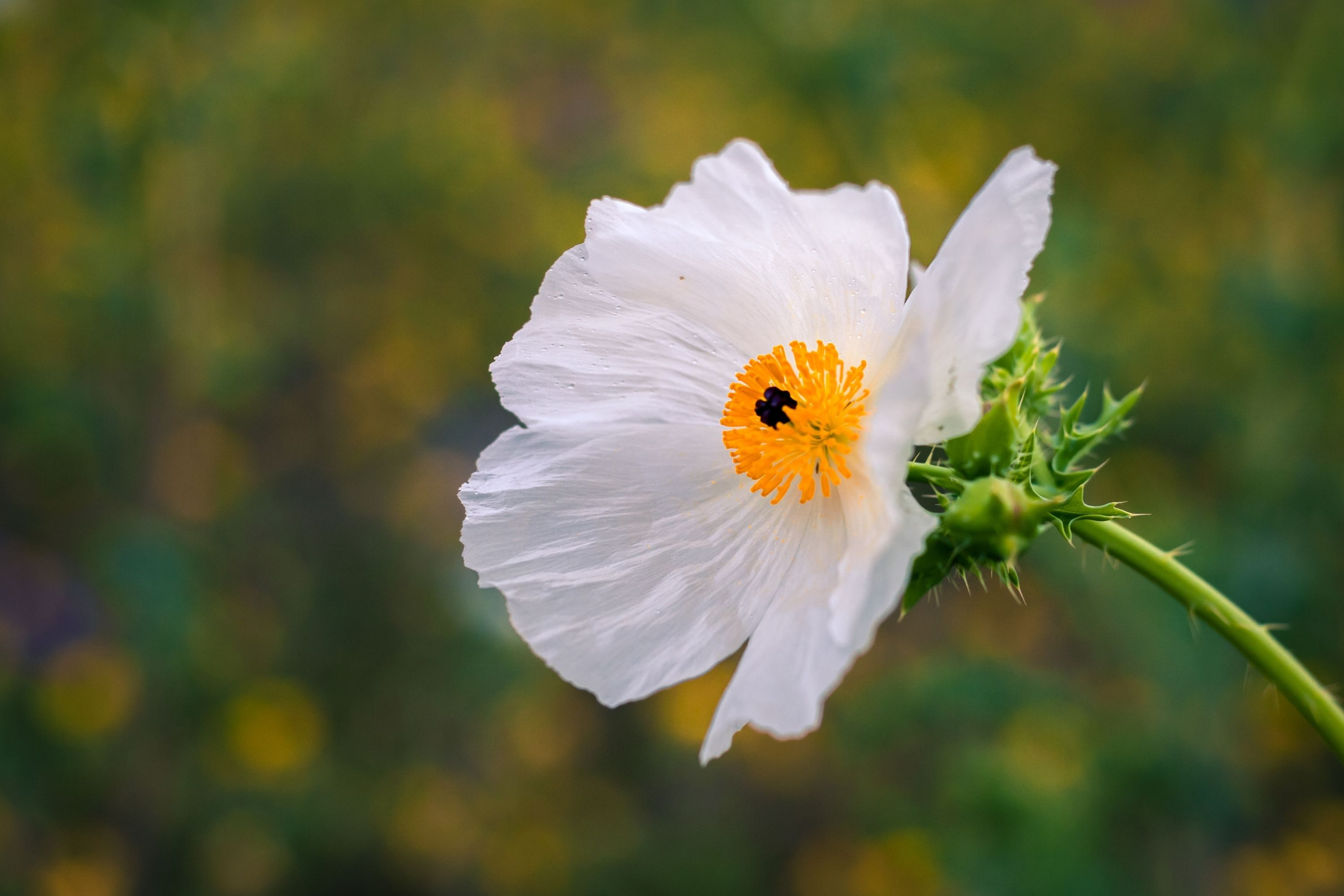White prickly poppy
(Argemone albiflora)

Description
Argemone albiflora, the white prickly poppy, also known as the bluestem prickly poppy or the Texas prickly poppy, is a small erect plant with a decorative white flower with a yellow latex. It is deeply rooted with yellow or red stamens. The plant is known for the sharp prickles on its stem and leaves. The sepals fall off as the flower of this plant grows bigger. It grows in the arid regions of the southern Midwest along roadsides and disturbed pieces of land. Native Americans have long revered this plant for its medicinal and other uses. Argemone albiflora can be found in the area ranging from east Texas to northern Arkansas and southern Missouri. Native to areas of Southern California's High Desert such as Twentynine Palms. White prickly poppy is an annual or biennial plant that often grows in colonies in sandy or gravelly soils. This plant is often found along fences, roadsides, railroad tracks, on hills and slopes, and in overgrazed pastures. Individuals of this species are erect, prickly deep-rooted plants with a white flower that contains many yellow and red stamens. The flowers grow solitarily or in loose cymes at the top of the plant. It contains grayish-green, long (2 to 10 inches) lanceolate to ovate leaves. The lower leaves are lobed to the midrib while the upper leaves are more shallow. The upper surface of the leaf is smooth although it has a few prickles along the midrib while the lower surface of the leaf is spiny along the midrib and main vein. Flowers of Argemone albiflora contain 3 long sepals and 6 petals and is ovate to almost circular with a rugged outer margin. The ovary is single chambered and contains many ovules with 3 to 5 lobed purple stigma. The fruit of this plant is a spiny capsule opening by the terminal splits. The seeds are brownish black. This plant is usually avoided by cattle and many other animals that roam the southern Midwest area as it is very prickly and has limited nutritional value. The seeds are the most nutritional part of the plant. Quails and doves consume these seeds for its high oil content. Each flower produces an abundance of seeds making it a reliable food source.
Taxonomic tree:







